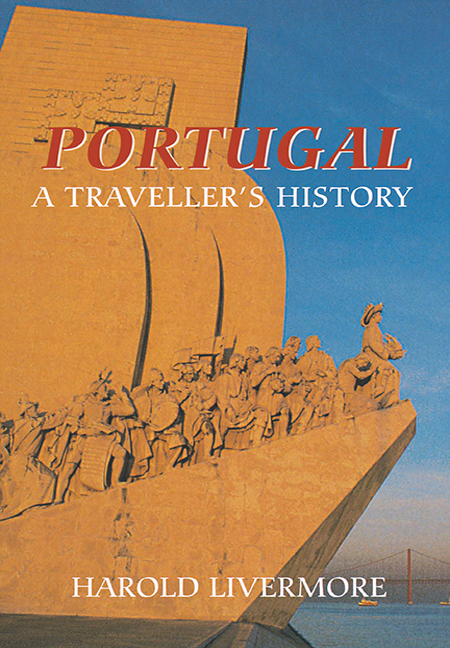Book contents
- Frontmatter
- Contents
- List of Illustrations
- Foreword
- 1 Introduction
- 2 Portugal in History
- 3 Before Portugal
- 4 Islamic Portugal
- 5 Architecture
- 6 Painting
- 7 Music
- 8 Birds
- 9 Fishing
- 10 Portuguese Wines
- 11 Lisbon
- 12 North from Lisbon
- 13 Oporto
- 14 North of Oporto
- 15 Interior Portugal
- 16 Alentejo
- 17 Algarve
- Afterword
- Index
- Frontmatter
- Contents
- List of Illustrations
- Foreword
- 1 Introduction
- 2 Portugal in History
- 3 Before Portugal
- 4 Islamic Portugal
- 5 Architecture
- 6 Painting
- 7 Music
- 8 Birds
- 9 Fishing
- 10 Portuguese Wines
- 11 Lisbon
- 12 North from Lisbon
- 13 Oporto
- 14 North of Oporto
- 15 Interior Portugal
- 16 Alentejo
- 17 Algarve
- Afterword
- Index
Summary
In an age when recorded sounds are available everywhere, what is heard in Portugal may or may not be Portuguese music. Discounting international sound, which is easily industrialised, and in which Portugal doubtless has its place, we can only say briefly what is typically Portuguese. When Ann Livermore wrote her Short History of Spanish Music in 1972, she remarked that she could not do a similar volume for Portuguese because you can't write about music unless you hear it. Now much more Portuguese music is available, for which a debt is owed to the Gulbenkian Foundation, particularly in the field of early church music which had hitherto gone unpublished. Church music emanated from the monasteries, and the tradition was abruptly broken at the dissolution of 1834, being only gradually restored. Secular music was performed at royal banquets and other occasions in the middle ages, and much of it went unrecorded. Some later music comes from the eighteenth-century opera, which flourished in the golden days of King John V. A detailed account of Portuguese opera by Manuel Carlos de Brito is available in English (Cambridge 1989).
The Galaico-Portuguese lyric goes back to the twelfth century, when the songbooks or Cancioneiros were formed. Under the learned Alfonso X (1252–84), the religious Cantigas de Santa Maria were preserved in Castile, while the secular tradition passed to his grandson, King Diniz of Portugal (1279–1325). The forms adopted in the songbooks fell into three main groups: the first, addressed by men to women; the second, put into the mouths of women, is amatory and plaintive, though almost always composed by men; and the third is satirical, denunciatory or comic. This convention lasted until about 1400. A new troubadour convention then arrived from Castile or Aragon (previously from Provence or Italy). The Portuguese style was more contemplative and discursive than the Castilian, which was ecstatic and introspective.
In the greater churches, the organ had prepared the way for orchestration and polyphony. The theatre of Gil Vicente, which prevailed at court from 1502 until 1536, calls for a wide variety of songs and dances, some of them regional. Camões’ last play, Filodemo, performed by the poet and his friends in India in 1554, calls for half a dozen rustic instruments.
- Type
- Chapter
- Information
- Portugal: A Traveller's History , pp. 66 - 69Publisher: Boydell & BrewerPrint publication year: 2004

